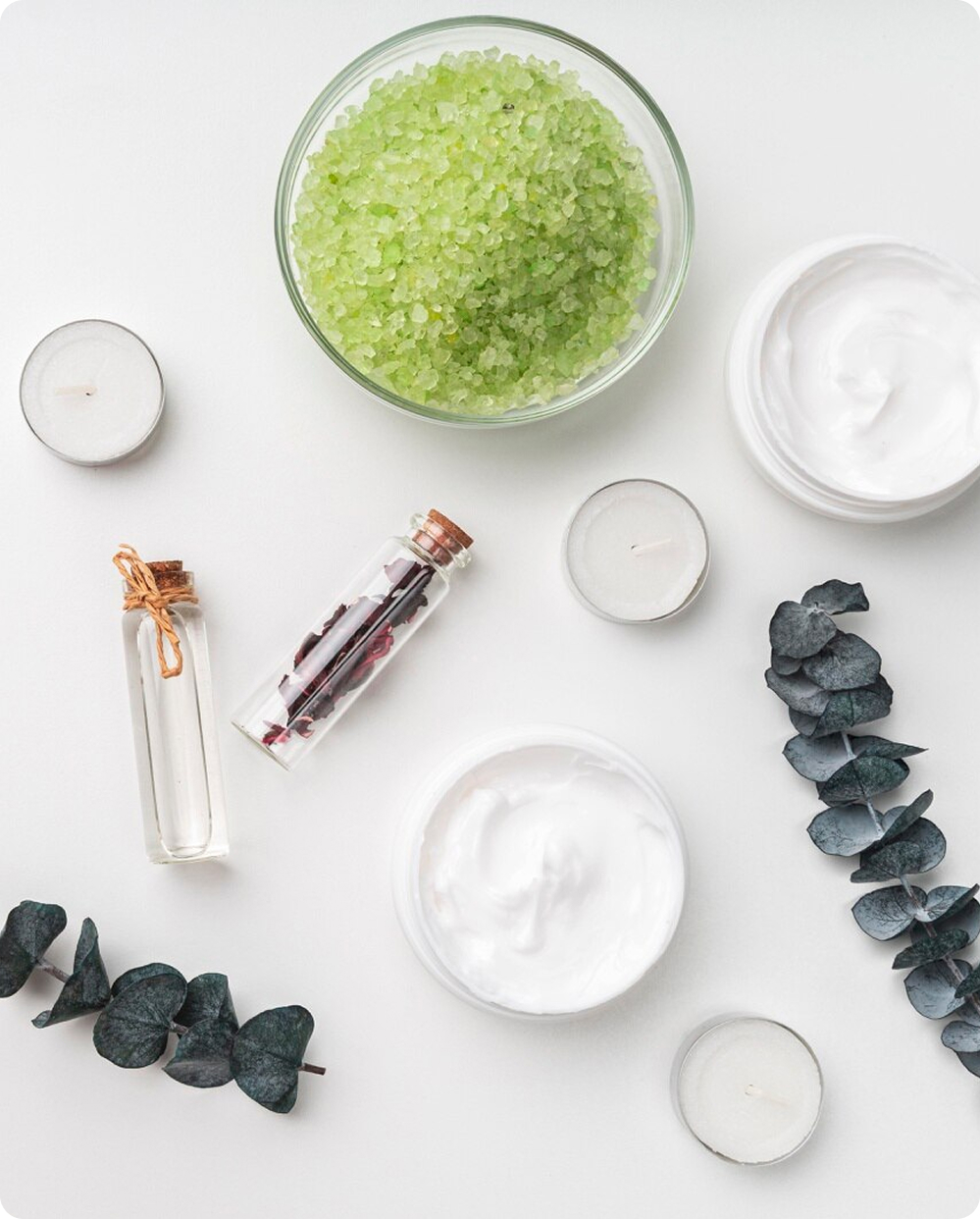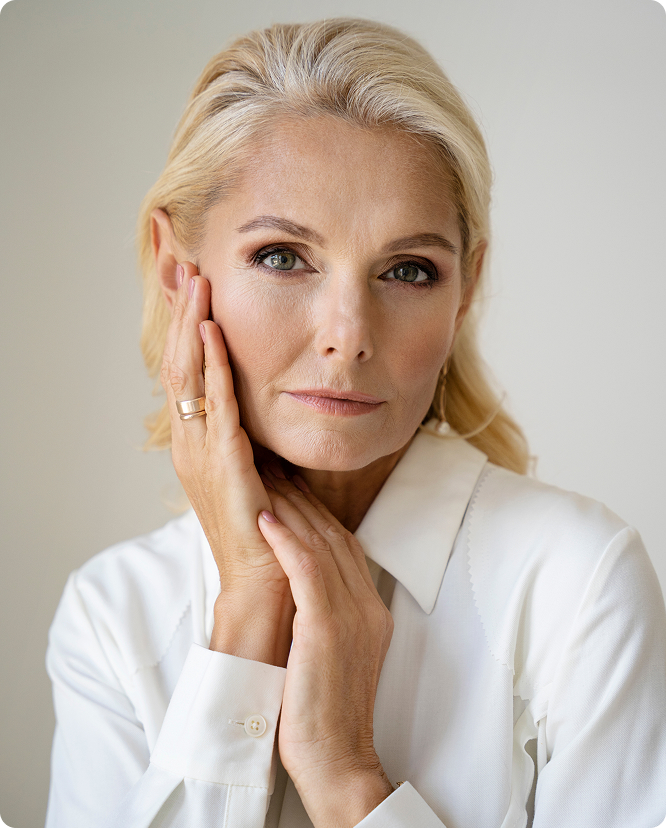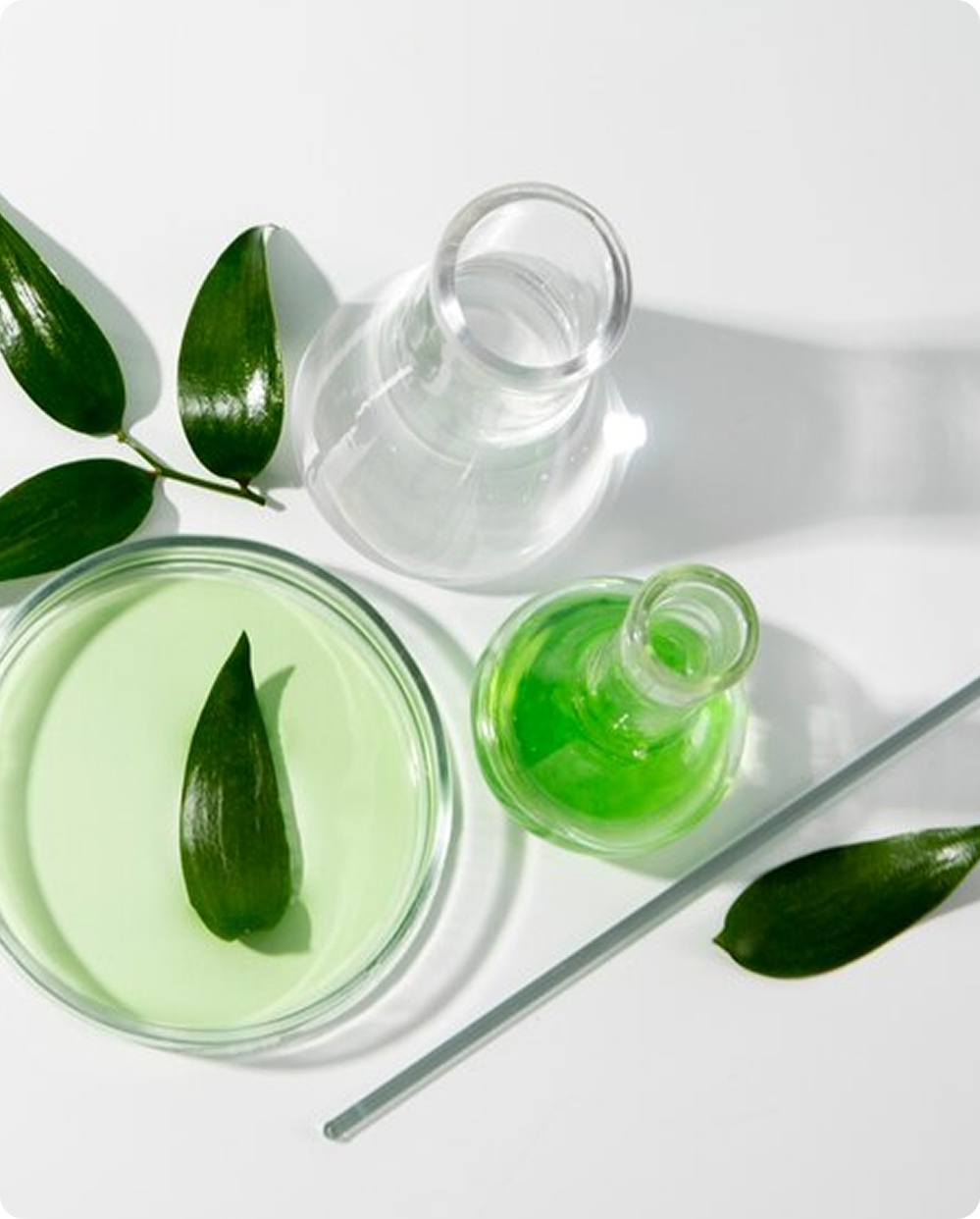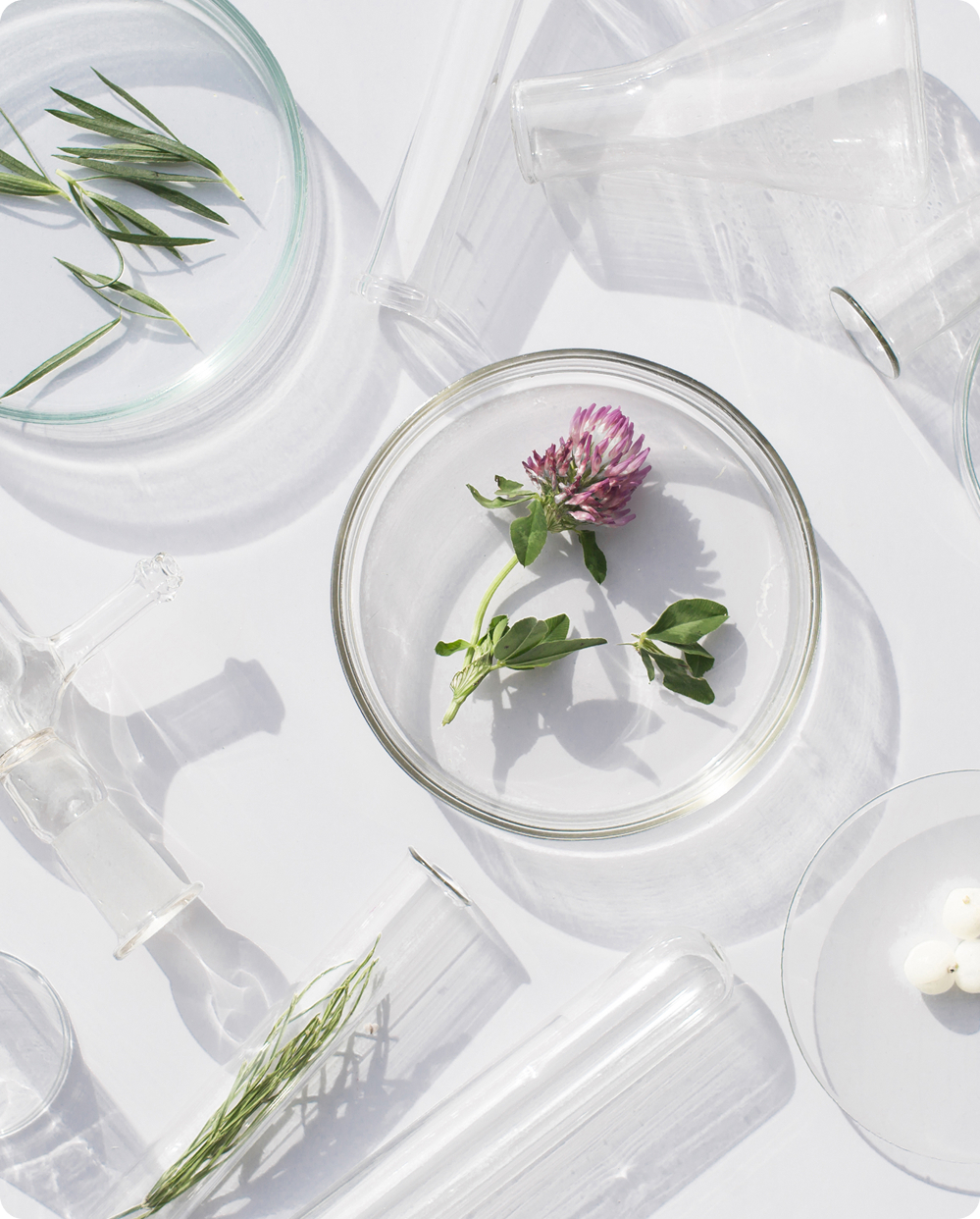If you're dealing with vaginal dryness, you're definitely not alone. This incredibly common issue affects millions of women, yet it's still something many of us feel uncomfortable talking about. Here's the thing, though, you don't have to just deal with it.
Whether you're experiencing occasional dryness or it's become a daily struggle, there are effective solutions out there. From simple lifestyle tweaks to medical treatments that actually work, we're breaking down everything you need to know about treating and preventing vaginal dryness.
Ready to get your comfort back? Let's dive in.
What Causes Vaginal Dryness?
Before we jump into solutions, let's quickly cover what might be behind your dryness. Understanding the "why" can help you choose the most effective treatment approach.
The Usual Suspects
Hormonal Changes: This is the big one. Your estrogen levels naturally fluctuate throughout your menstrual cycle, and they take a major dip during menopause, perimenopause, breastfeeding, and the postpartum period. Think of estrogen as your vaginal tissues' best friend: when it's low - things get dry.
Lifestyle Factors: Not drinking enough water, chronic stress, and smoking can all contribute to dryness. Your vaginal tissues need hydration just like the rest of your body.
Irritating Products: Most "Feminine hygiene" products with fragrances often do more harm than good. Douches, scented soaps, and perfumed pads can disrupt your vaginal environment and strip away natural moisture.
Medications: Antihistamines (hello, allergy season), certain antidepressants, and some hormonal birth control methods can decrease vaginal moisture as a side effect.
Health Conditions: Thyroid disorders, diabetes, and autoimmune conditions like Sjögren's syndrome can affect your body's ability to produce natural lubrication.
If you want to dive deeper into the causes and symptoms, check out our detailed guide on understanding vaginal dryness.
Your Treatment Options: From Quick Fixes to Long-Term Solutions
Now for the good stuff: what actually works to relieve vaginal dryness. We're covering everything from over-the-counter options you can grab today to prescription treatments that might be game-changers.
Over-the-Counter Solutions: Your First Line of Defense
Vaginal Lubricants: Immediate Relief When You Need It
Think of lubricants as your emergency backup. They're designed for use during sexual activity to reduce friction and make things more comfortable. Here's what you need to know about your options:
Water-Based Lubricants are the most popular choice. They're compatible with condoms and most sex toys, but you might need to reapply during longer sessions.
Silicone-Based Options last longer than water-based lubes and feel silky smooth. Just a heads up: they can break down silicone toys.
Oil-Based Lubricants feel luxurious but aren't compatible with latex condoms (they can cause breakage). They're also harder to wash off, which can be annoying.
The composition of these products matters more than you might think, some can actually irritate your vaginal tissues if they're not formulated properly [1].
Vaginal Moisturizers: Your Daily Hydration Heroes
Here's where things get interesting. Unlike lubricants that you use in the moment, moisturizers are designed for regular use to keep your vaginal tissues hydrated over time. They're absorbed into the tissue and help maintain moisture levels between applications.
Many contain ingredients like hyaluronic acid or polycarbophil, molecules that are really good at attracting and holding onto water. Think of them as giving your vaginal tissues a drink of water that lasts for days.
Prescription Treatments: When You Need the Big Guns
If over-the-counter options aren't cutting it, don't suffer in silence. There are prescription treatments that can be incredibly effective, especially if your dryness is hormone-related.
Low-Dose Vaginal Estrogen: The Gold Standard
This is considered the most effective treatment for moderate to severe vaginal dryness related to menopause (part of what doctors call Genitourinary Syndrome of Menopause, or GSM). Here's why it works so well: it delivers a small amount of estrogen directly to your vaginal tissues with minimal absorption into your bloodstream [2].
You've got options for how to use it:
Vaginal Creams that you apply with an applicator, think of it like a moisturizer that goes inside your vagina.
Vaginal Tablets or Inserts are small tablets you place in your vagina that dissolve and release estrogen slowly.
Vaginal Rings are flexible rings you insert into the vagina that release estrogen continuously for several months. Set it and forget it.
Multiple systematic reviews confirm that vaginal estrogen really works for GSM symptoms [3]. We're talking about real, measurable improvement in dryness, irritation, and pain during sex.
Systemic Hormone Replacement Therapy (HRT): The Whole-Body Approach
If you're dealing with vaginal dryness plus other menopausal symptoms like hot flashes, night sweats, or mood changes, systemic HRT might be worth discussing with your healthcare provider.
Systemic HRT includes estrogen delivered via tablets, patches, or gels that work throughout your whole body, not just your vaginal tissues [4]. It's prescribed when vaginal symptoms are part of a bigger picture of hormonal changes.
Here's what the research shows: systemic HRT eliminates vaginal atrophy symptoms in about 75% of cases, while local vaginal estrogen works for 80-90% of people [4]. Both are highly effective; it's really about what makes sense for your overall health picture.
Ospemifene (Osphena®): The Selective Approach
This oral medication is what's called a Selective Estrogen Receptor Modulator (SERM). Basically, it acts like estrogen on your vaginal tissues (improving moisture and thickness) but has different effects on other parts of your body.
Clinical studies have shown that ospemifene is effective and well-tolerated for treating vulvovaginal atrophy [5]. It's a good option if you want the benefits of estrogen for your vaginal health but can't or don't want to use traditional hormone therapy.
Prasterone (Intrarosa®): The Local Hormone Approach
This is a vaginal insert containing dehydroepiandrosterone (DHEA), which your body converts into estrogen and androgens right where you need them—in your vaginal tissues. It's like giving your vaginal cells the building blocks they need to make their own hormones locally.
Clinical trials support its use for painful sex and vaginal dryness [6]. Some people prefer this approach because the hormone conversion happens locally rather than having to take systemic hormones.
Important Considerations for Prescription Treatments
Here's the reality: while these prescription options can be incredibly effective, they're not right for everyone. You'll need to work with a healthcare provider to figure out what makes sense for your specific situation.
Women with a history of certain cancers (especially breast cancer) need careful evaluation before considering estrogen-based therapies. The good news is that low-dose vaginal estrogen is often considered safe even in many of these cases, but it requires medical supervision and individualized decision-making.
Bottom Line: You've got options ranging from quick-relief lubricants to highly effective prescription therapies. Over-the-counter lubricants and moisturizers are great starting points, while prescription options, such as vaginal estrogen, systemic HRT, ospemifene, and prasterone, can be game-changers for hormone-related dryness. The key is finding what works for your body and your life, ideally with guidance from a healthcare provider who understands your needs.
Natural Solutions: Working with Your Body's Own Systems
If you're someone who prefers to start with natural approaches (or combine them with medical treatments), you're in luck. There are some genuinely effective, science-backed natural options for vaginal dryness.
Let's be clear, though, we're not talking about unproven home remedies here. These are ingredients and approaches that actually have research behind them.
Science-Backed Natural Moisturizers
Hyaluronic Acid: Your Vagina's Hydration Hero
You've probably heard of hyaluronic acid in skincare, but it's also amazing for vaginal health. This molecule, which your body naturally produces, may hold up to 1000 times its weight in water. Basically, it's like a super-powered sponge for moisture.
Here's what the research shows:
A randomized controlled trial found that hyaluronic acid vaginal gel improved vaginal dryness symptoms in postmenopausal women just as well as estrogen cream [7]. That's pretty impressive for a non-hormonal option.
Another study comparing hyaluronic acid vaginal cream to conjugated estrogen found both treatments effective for improving vaginal atrophy symptoms [8]. The researchers concluded that hyaluronic acid could be a viable alternative for people who can't or don't want to use hormones.
A 2021 systematic review looked at multiple studies and concluded that hyaluronic acid was generally effective for improving symptoms like painful sex, itching, burning, and dryness [9].
How does it work? Hyaluronic acid creates a moisture reservoir in your tissues, supports your body's natural hydration processes, and forms a protective moisture barrier. The exact mechanisms in vaginal tissue specifically are still being researched, but the results speak for themselves.
Polycarbophil: The Moisture-Retaining Polymer
This one sounds super scientific, but polycarbophil is basically a hydrophilic (water-loving) polymer that's really good at holding onto moisture. Think of it as creating a protective, hydrating layer on your vaginal tissues.
The research is promising:
A 2024 clinical study called the TRIPLE study showed that polycarbophil vaginal gel improved symptoms like itching, burning, painful sex, and urinary discomfort in postmenopausal women [10].
A study from 1994 (yes, they've been researching this for a while!) found that polycarbophil-based moisturizers reduced painful sex by about 60% within four weeks in breast cancer survivors [11]. That's significant relief for a group that often can't use hormonal treatments.
A 2022 comparison study found that both polycarbophil and hyaluronic acid gels were similarly effective for alleviating vaginal atrophy and dryness symptoms [12].
Polycarbophil is thought to create a bioadhesive layer that sticks to your vaginal tissues, potentially providing sustained hydration between applications. More research is needed to fully understand how it works, but the clinical results are encouraging [13].
Vitamin E: The Antioxidant Approach
Vitamin E isn't just good for your skin, it can also provide moisturizing and healing benefits for vaginal tissues.
The studies are pretty compelling:
Research published in the Iranian Journal of Nursing and Midwifery Research found that vitamin E vaginal suppositories improved cellular markers of vaginal atrophy in postmenopausal women. [14].
A 2019 randomized controlled trial showed that vitamin D and E vaginal suppositories reduced vaginal pH and improved vaginal atrophy symptoms in women with breast cancer who were taking tamoxifen [15].
Plant-Based Options for External Comfort
For your external vulval area (the parts you can see), certain plant-derived ingredients may provide gentle, effective moisture.
Shea Butter and Plant Oils
A comprehensive review in the International Journal of Molecular Sciences looked at the effects of various plant oils and butters on skin health. The research found that shea butter has anti-inflammatory properties and may help with skin barrier repair [16].
Jojoba Oil
A 2013 review of jojoba in dermatology found it has moisturizing, anti-inflammatory, and skin-protective properties, potentially making it suitable for sensitive skin applications [17].
Here's the important caveat: while these ingredients have demonstrated benefits for general skin health, specific studies on their use for vulval dryness are limited, and internal use is usually not recommended. Their use for vulval care is based more on their known properties and safety profiles rather than condition-specific clinical trials.
What to Be Cautious About
Not all "natural" options are created equal. Some popular remedies might actually do more harm than good.
Coconut Oil: Proceed with Caution
Despite its popularity in wellness circles, research suggests coconut oil might not be the best choice for vaginal use. A 2013 study in Obstetrics & Gynecology examined various intravaginal practices (including oils generally) and their association with infections, though this study didn't specifically focus on coconut oil [18]. However, oil-based products used vaginally may increase risk of infections in some individuals, and clinical consensus suggests caution with oil-based products for vaginal use.
Lifestyle Approaches That Actually Help
Beyond topical treatments, certain lifestyle changes can support your vaginal health and moisture levels.
Movement and Exercise
Regular physical activity improves blood circulation throughout your body, including to your vaginal tissues. You don't need to become a marathon runner; gentle movement like yoga may help alleviate menopausal symptoms overall.
Pelvic Floor Exercises
A 2017 randomized clinical trial found that pelvic floor muscle exercises may improve sexual function in menopausal women [19]. These exercises increase blood flow to your pelvic area, which can support natural lubrication.
Stress Management
While we need more research on the direct link between stress and vaginal dryness, studies show that stress reduction techniques can improve overall sexual function in women [20]. Chronic stress can affect your hormone balance and blood flow, both of which may impact vaginal health.
Sexual Activity
Here's some good news: regular sexual activity (including solo play) increases blood flow to your vagina and may help maintain tissue health. It's like the "use it or lose it" principle; regular stimulation can help keep your vaginal tissues healthy, especially during and after menopause.
Smart Hygiene Practices
While research on specific hygiene practices and vaginal dryness is limited, clinical consensus suggests:
- Washing your external genital area with warm water alone or a pH-balanced, fragrance-free cleanser.
- Skip the douching, it washes away beneficial bacteria and natural moisture.
- Choose breathable cotton underwear to allow airflow.
These recommendations are based on clinical experience and understanding of vaginal physiology rather than specific studies on dryness prevention.
The Role of Diet
Certain dietary approaches may support vaginal health, though more research is needed:
- Phytoestrogens from foods like soy and flaxseeds may have mild estrogen-like effects.
- Omega-3 fatty acids support overall membrane health and may contribute to tissue hydration.
- Staying well-hydrated supports all your mucous membranes, including vaginal tissues.
The Bottom Line:
Natural approaches to vaginal dryness include clinically proven ingredients such as hyaluronic acid, polycarbophil, and vitamin E, all of which are backed by multiple peer-reviewed studies. For external comfort, plant-derived ingredients such as shea butter and jojoba oil have demonstrated skin benefits, although specific research for vulval use is more limited. Some popular remedies, like coconut oil, should be approached with caution. Lifestyle factors like regular exercise, stress management, and sexual activity may also support vaginal health. The most effective natural strategy typically combines targeted moisturizing ingredients with supportive lifestyle practices.
Neycher's Approach: Supporting Your Vaginal Ecosystem
At Neycher, we get it: your vaginal health isn't just about one symptom or one solution. It's about supporting your entire vaginal ecosystem so your body can do what it does best: maintain balance and comfort naturally.
Our Philosophy: Work with Your Body, Not Against It
We believe in a microbiome-first approach. That means:
Respecting Your Microbiome: We choose ingredients that support or are compatible with the beneficial Lactobacillus bacteria that keep your vaginal environment healthy.
Maintaining Optimal pH: Our formulations work in harmony with your body's naturally acidic vaginal pH (3.8-4.5), rather than against it.
Nourishing Your Tissues: We select ingredients known to hydrate, soothe, and support the integrity of your delicate vaginal and vulval tissues.
Enhancing Natural Processes: Instead of masking symptoms, we focus on ingredients that boost your body's own moisturizing and protective mechanisms.
Our Solutions for Vaginal Dryness
Important note: The following product information is for informational purposes only and represents the manufacturer's descriptions and intended uses. It's not intended to diagnose, treat, cure, or prevent any disease or symptom. Always consult with a qualified healthcare professional before starting any new treatment, especially if you have underlying health conditions or are pregnant or breastfeeding. Individual results may vary.
Ultra Moisturising Complex with 10mg Hyaluronic Acid
This isn't your average vaginal moisturizer. We've formulated it specifically to provide deep, lasting hydration from within.
Hyaluronic Acid (10mg): Remember that moisture-holding superstar we talked about earlier? We use a clinically relevant amount designed to effectively replenish moisture in your vaginal tissues.
Polycarbophil: Working alongside hyaluronic acid, this ingredient potentially creates a bioadhesive layer that helps retain moisture for sustained comfort between applications.
Vitamin E: Provides potential antioxidant benefits and supports overall tissue health.
This complex is designed for regular use (every 2-3 days) to restore and maintain your natural vaginal moisture levels. We're talking about addressing root causes, not just providing temporary relief.
Botanical Vulva Balm
Because dryness doesn't just affect what's inside, your external vulval area needs love too. This balm provides targeted comfort and protection for sensitive external skin.
Shea Butter & Jojoba Oil: These rich emollients form a protective barrier, locking in moisture and soothing dry, irritated skin.
Rosehip & Calendula Oils: Included for their potential skin-calming and regenerative properties.
Vitamin E: May offer antioxidant protection for your delicate vulval tissues.
Use this balm externally as needed to relieve itching, irritation, and discomfort associated with vulval dryness.
How to Fit Neycher Products into Your Routine
Our products work best as part of a holistic approach:
Use the Vaginal Moisturiser regularly to maintain internal vaginal hydration. Apply the Botanical Vulva Balm externally as needed for vulval comfort. Combine with healthy lifestyle practices like staying hydrated, managing stress, and engaging in regular sexual activity (using lubricants initially if needed). Consider dietary adjustments to include phytoestrogens and omega-3 fatty acids.
Bottom Line: Neycher's approach focuses on supporting your entire vaginal ecosystem, not just treating symptoms. Our Vaginal Moisturiser uses clinically supported ingredients like hyaluronic acid and polycarbophil for internal hydration, while our Botanical Vulva Balm provides gentle, plant-based comfort for external areas. These products are designed to work with your body's natural processes and complement healthy lifestyle choices for comprehensive, lasting relief.
Prevention: Keeping Dryness at Bay
Here's the thing about vaginal dryness, it's often easier to prevent than to treat. While you can't control everything (hello, hormonal changes), there are definitely things you can do to support your vaginal health long-term.
Daily Habits That Make a Difference
Keep It Simple with Cleansing
Your vagina is self-cleaning, so less is definitely more. Wash your external vulval area daily with warm water only, or use a mild, pH-balanced, fragrance-free cleanser if you prefer. Skip the harsh soaps and definitely don't scrub.
Say No to Douching
We can't stress this enough: douching disrupts your vaginal microbiome and strips away protective mucus. It's like power-washing a delicate ecosystem - not helpful.
Choose Your Underwear Wisely
Cotton underwear allows better airflow than synthetic fabrics, helping maintain a healthy environment. Your vagina needs to breathe.
Stay Hydrated
This one's simple but important. Drink plenty of water throughout the day to support overall hydration, including your mucous membranes.
Products to Avoid
Anything with Fragrance
Feminine hygiene sprays, scented pads or tampons, perfumed soaps, and scented laundry detergents can all irritate your sensitive vaginal and vulval tissues. If it smells like flowers, keep it away from your vulva.
Harsh Chemicals
Avoid products containing alcohol, parabens, glycerin (which can sometimes be irritating), or harsh detergents in your genital area.
The Wrong Lubricants
Be mindful of lubricants containing ingredients that can irritate or disrupt pH, such as glycerin, parabens, or certain preservatives. Look for pH-balanced, iso-osmolar formulas when possible.
Environmental Factors to Consider
Clothing Choices
Avoid wearing tight, non-breathable clothing for extended periods. This can trap moisture and heat, potentially disrupting your vaginal environment.
Pool and Hot Tub Caution
Chlorinated water can be drying and irritating. Rinse off with fresh water after swimming and limit time in hot tubs if you're prone to dryness or irritation.
Sexual Health Maintenance
Use Lubricant Generously
During sexual activity, always use a high-quality lubricant if needed to prevent friction and potential tissue irritation, even if you don't feel particularly dry.
Communication is Key
Open communication with your partner about comfort levels during intimacy is crucial for preventing pain and ensuring positive experiences.
Regular Activity Helps
Regular sexual activity (including solo sessions) helps increase blood flow to your genital area and may support tissue health.
Bottom Line: Prevention involves consistent, gentle care practices. Key strategies include avoiding irritating products, selecting breathable fabrics, staying hydrated, using suitable lubricants during intimacy, and maintaining overall health through a balanced diet and a healthy lifestyle. These proactive steps support your vaginal ecosystem and minimize factors that contribute to dryness.
When to See a Healthcare Provider
While many cases of vaginal dryness can be managed with over-the-counter products and lifestyle changes, sometimes you need professional help. Don't suffer in silence, here's when it's time to make that appointment.
Red Flags That Need Medical Attention
Severe or Persistent Symptoms
If your dryness is severe, doesn't improve with self-care measures, or significantly impacts your daily life or relationships, it's time to see a healthcare provider. You shouldn't have to just "deal with it."
Painful Sex
Persistent pain during sex should be evaluated to rule out other potential causes, like infections or pelvic floor dysfunction. Pain during sex is not normal and is not something you should just endure.
Unusual Discharge or Odor
Changes in your vaginal discharge or strong odor may indicate an infection that requires specific treatment.
Any Unexplained Bleeding
This one's non-negotiable; any unexplained vaginal bleeding requires prompt medical attention.
Urinary Symptoms
If dryness occurs alongside persistent urinary symptoms, consult a healthcare provider to evaluate for potential Genitourinary Syndrome of Menopause (GSM) or a urinary tract infection.
Medication-Related Dryness
If you experience dryness after starting a new medication, discuss alternative options with your healthcare provider. There might be other options that don't have this side effect.
Hormonal Concerns
If you suspect that your dryness is related to hormonal changes, a healthcare provider can discuss testing and treatment options with you.
Bottom Line: While self-care is often effective for mild vaginal dryness, don't hesitate to consult a healthcare provider if symptoms are severe, persistent, accompanied by unusual discharge or bleeding, associated with urinary issues, or significantly impact your quality of life. A professional evaluation ensures an accurate diagnosis and appropriate treatment.
Your Questions, Answered
Are lubricants and moisturizers the same thing?
Nope! Lubricants are for use during sexual activity to provide temporary moisture and reduce friction. Moisturizers are designed for regular use to be absorbed by your vaginal tissues and provide ongoing hydration. Think of lubricants as a quick fix and moisturizers as long-term care.
Is vaginal estrogen safe to use?
Low-dose vaginal estrogen is considered safe and effective for most women experiencing menopausal vaginal dryness. It delivers estrogen primarily to your vaginal tissues with minimal absorption into your bloodstream. However, you'll need to discuss your personal health history (especially any history of hormone-sensitive cancers) with your healthcare provider to determine if it's right for you.
Can what I eat really affect vaginal dryness?
Diet can play a supportive role. Foods rich in phytoestrogens (like soy and flaxseeds) may have mild estrogen-like effects, while omega-3 fatty acids support overall membrane health. Staying well-hydrated is also important. However, diet alone usually isn't sufficient to treat moderate to severe vaginal dryness, especially if it's hormone-related.
How long does it take for treatments to work?
It depends on what you're using. Lubricants provide immediate, temporary relief. Vaginal moisturizers may take several applications over a week or two to show noticeable improvement. Prescription therapies like vaginal estrogen often start providing relief within a few weeks, with maximum benefits seen after several months of consistent use.
How often should I use vaginal moisturizers?
For best results, follow the specific product instructions, as frequency can vary by formulation. Generally, most vaginal moisturizers work best when used consistently every 2-3 days, rather than only when symptoms are noticeable. You might need more frequent application (every 1-2 days) for the first week, then move to a maintenance schedule. Regular use allows the moisturizer to maintain tissue hydration continuously rather than just temporarily relieving symptoms. If you're using Neycher Vaginal Moisturizer, applying it every 2-3 days is typically recommended for sustained comfort and tissue health.
Understanding your treatment options and prevention strategies for vaginal dryness empowers you to take proactive steps toward maintaining vaginal comfort and health. For more information about the causes and symptoms of vaginal dryness, check out our article on understanding vaginal dryness.
References
[1] Adriaens, E., & Remon, J. P. (2008). Mucosal irritation potential of personal lubricants relates to product osmolality. Sexually Transmitted Diseases, 35(5), 512-516. https://pubmed.ncbi.nlm.nih.gov/18356773/
[2] Kagan, R., Kellogg-Spadt, S., & Parish, S. J. (2019). Practical treatment considerations in the management of genitourinary syndrome of menopause. Drugs & Aging, 36(10), 897-908. https://pmc.ncbi.nlm.nih.gov/articles/PMC6764929/
[3] Lethaby, A., Ayeleke, R. O., & Roberts, H. (2016). Local oestrogen for vaginal atrophy in postmenopausal women. Cochrane Database of Systematic Reviews, 8, CD001500. https://pubmed.ncbi.nlm.nih.gov/27577677/
[4] Naumova, I., & Castelo-Branco, C. (2018). Current treatment options for postmenopausal vaginal atrophy. International Journal of Women's Health, 10, 387-395. https://pmc.ncbi.nlm.nih.gov/articles/PMC6074805/
[5] Portman, D. J., Bachmann, G. A., & Simon, J. A. (2013). Ospemifene, a novel selective estrogen receptor modulator for treating dyspareunia associated with postmenopausal vulvar and vaginal atrophy. Menopause, 20(6), 623-630. https://pubmed.ncbi.nlm.nih.gov/23361170/
[6] Labrie, F., Archer, D., Bouchard, C., Fortier, M., Cusan, L., Gomez, J. L., ... & Martel, C. (2009). Effect of intravaginal dehydroepiandrosterone (Prasterone) on libido and sexual dysfunction in postmenopausal women. Menopause, 16(5), 923-931. https://pubmed.ncbi.nlm.nih.gov/19424093/
[7] Chen, J., Geng, L., Song, X., Li, H., Giordan, N., & Liao, Q. (2013). Evaluation of the efficacy and safety of hyaluronic acid vaginal gel to ease vaginal dryness: a multicenter, randomized, controlled, open-label, parallel-group, clinical trial. Journal of Sexual Medicine, 10(6), 1575-1584. https://pubmed.ncbi.nlm.nih.gov/23574713/
[8] Jokar, A., Davari, T., Asadi, N., Ahmadi, F., & Foruhari, S. (2016). Comparison of the Hyaluronic Acid Vaginal Cream and Conjugated Estrogen Used in Treatment of Vaginal Atrophy of Menopause Women: A Randomized Controlled Clinical Trial. International Journal of Community Based Nursing and Midwifery, 4(1), 69-78. https://pmc.ncbi.nlm.nih.gov/articles/PMC4709811/
[9] dos Santos, C. C. M., Uggioni, M. L. R., Colonetti, T., Colonetti, L., Grande, A. J., & Da Rosa, M. I. (2021). Hyaluronic Acid in Postmenopause Vaginal Atrophy: A Systematic Review. The Journal of Sexual Medicine, 18(1), 156-166. https://www.sciencedirect.com/science/article/pii/S1743609520309917
[10] Cagnacci, A., Xholli, A., Sclauzero, M., Venier, M., Palma, F., & Gambacciani, M. (2024). Short and long-term effect of polycarbophil vaginal gel on vaginal atrophy: The TRIPLE study. European Journal of Obstetrics & Gynecology and Reproductive Biology, 299, 1-6. https://pubmed.ncbi.nlm.nih.gov/38950453/
[11] Nachtigall, L. E. (1994). Comparative study: Replens versus local estrogen in menopausal women. Fertility and Sterility, 61(1), 178-180. https://pubmed.ncbi.nlm.nih.gov/8293835/
[12] Cagnacci, A., Xholli, A., Sclauzero, M., Venier, M., Palma, F., & Gambacciani, M. (2022). Polycarbophil vaginal moisturizing gel versus hyaluronic acid gel in women of late reproductive age with vaginal dryness: A randomized controlled trial. European Journal of Obstetrics & Gynecology and Reproductive Biology, 269, 73-78. https://pubmed.ncbi.nlm.nih.gov/35131532/
[13] Valenta, C. (2005). The use of mucoadhesive polymers in vaginal delivery. Advanced Drug Delivery Reviews, 57(11), 1692-1712. https://pubmed.ncbi.nlm.nih.gov/16182407/
[14] Emamverdikhan, A. P., Golmakani, N., Tabassi, S. A. S., Hassanzadeh, M., Sharifi, N., & Shakeri, M. T. (2016). A survey of the therapeutic effects of Vitamin E suppositories on vaginal atrophy in postmenopausal women. Iranian Journal of Nursing and Midwifery Research, 21(5), 475-481. https://pmc.ncbi.nlm.nih.gov/articles/PMC5114791/
[15] Keshavarzi, Z., Janghorban, R., Alipour, S., Tahmasebi, S., & Jokar, A. (2019). The effect of vitamin D and E vaginal suppositories on tamoxifen-induced vaginal atrophy in women with breast cancer. Supportive Care in Cancer, 27(4), 1325-1334. https://pubmed.ncbi.nlm.nih.gov/30729333/
[16] Lin, T. K., Zhong, L., & Santiago, J. L. (2017). Anti-inflammatory and skin barrier repair effects of topical application of some plant oils. International Journal of Molecular Sciences, 19(1), 70. https://pubmed.ncbi.nlm.nih.gov/29280987/
[17] Pazyar, N., Yaghoobi, R., Rafiee, E., Mehrabian, A., & Feily, A. (2013). Jojoba in dermatology: A succinct review. Giornale Italiano di Dermatologia e Venereologia, 148(6), 687-691. https://pubmed.ncbi.nlm.nih.gov/24442052/
[18] Fashemi, B., Delaney, M. L., Onderdonk, A. B., & Fichorova, R. N. (2013). Effects of feminine hygiene products on the vaginal mucosal biome. Obstetrics & Gynecology, 121(4), 773-780. https://pubmed.ncbi.nlm.nih.gov/24009546/
[19] Nazarpour, S., Simbar, M., Ramezani Tehrani, F., & Alavi Majd, H. (2017). Effects of sex education and Kegel exercises on the sexual function of postmenopausal women: A randomized clinical trial. International Journal of Environmental Research and Public Health, 17(21), 8047. https://pubmed.ncbi.nlm.nih.gov/28601506/
[20] Hamilton, L. D., & Meston, C. M. (2013). Chronic stress and sexual function in women. Journal of Sexual Medicine, 10(10), 2443-2454. https://pmc.ncbi.nlm.nih.gov/articles/PMC4199300/
Medical Disclaimer: This article is for informational purposes only and does not constitute medical advice. Always consult with a healthcare professional for any health concerns or before making any decisions related to your health or treatment. The information provided should not be used to diagnose, treat, cure, or prevent any medical condition. Individual results may vary, and what works for one person may not work for another.








